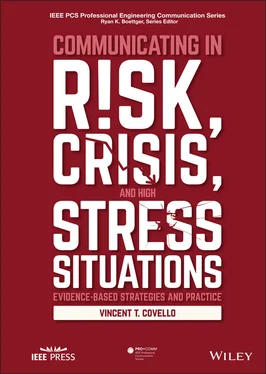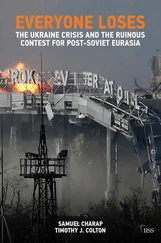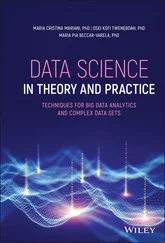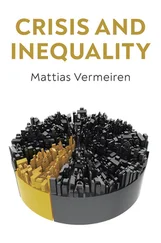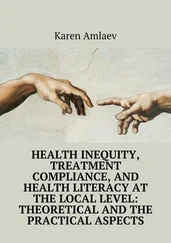The first task of the new program director would be to write a white paper identifying gaps in knowledge about communications related to technological risks, to target where research was needed, and to describe how the Foundation would be spending Congressional monies to improve the knowledge base. This white paper would need to be delivered to Congress the following week.
The second task would be to develop a report for Congress on the quality of work by Federal government agencies and offices related to communications about technological risks. This would require the new program director to relocate for weeks, and perhaps months, to various agencies, including the White House Council on Environmental Quality, the Office of the Science Advisor to the President, the Food and Drug Administration, the Nuclear Regulatory Commission, the Department of Health and Human Services, and the US Environmental Protection Agency (EPA). Reports about the work of these agencies would need to be delivered to Congress by the end of the year. The Director speculated that it was unlikely these Federal agencies and offices would welcome this oversight.
The third task would be to determine how to spend the millions of dollars about to be appropriated. Support would be needed for creating a new professional society and a new peer‐reviewed scientific journal. Grants would need to be awarded quickly for quality work. All research grants would be reviewed personally by the NSF Director and likely would receive scrutiny by Congress and the White House.
The Director turned his gaze on the group and asked for a volunteer. There was silence in the room. There was lots of fidgeting. He asked again for a volunteer. Again, silence.
His eyes fixed on me. He said I was already the director of the closest existing Foundation program; that I had an interdisciplinary academic background, which was needed for the job; and that he had reviewed the evaluations of my work at the Foundation and they proved I was a person who could do the job. He pointed out that I had a head start: I had already done a case study on communications in the aftermath of industrial accidents, including the nuclear power plant accident at Three Mile Island.
I volunteered. Little did I know that I was present at the founding of what would become the field of risk communication. I would become one of the first presidents of the Society for Risk Analysis and I would help launch the journal Risk Analysis , one of the leading scientific publishers of original risk communication research. 2 This chapter relates the history of this ever‐developing field as new interdisciplinary research builds upon theory and expands our understanding of how individuals and society understand and communicate risk.
The story of the development of the theory and application of risk communication reveals the basis for current best practice. In one of the most comprehensive recent reviews to date of this history, Lundgren and McMakin (2018) summarized the history of risk communication as one that moved from a rather simplistic, linear, and mechanistic, one‐way, and send‐to‐receiver approach to a much more sophisticated approach that emphasized the importance of two‐way communication; exchanges of information; stakeholder engagement, involvement, participation; relationships and partnership building; consensus building; and constructive dialog. 3 This more sophisticated approach drew from the work of communication researchers and practitioners from a diverse set of disciplines, including the behavioral sciences, social sciences, engineering, medicine, public health, industrial hygiene, linguistics, and neuroscience.
In what is now a classic article of the history of risk communication, Fischhoff (1995) identified (somewhat tongue in cheek) eight historical phases or stages in the development of risk management and risk communication practice. 4 They were:
Stage 1: “All we have to do is get the numbers right.”
Stage 2: “All we have to do is tell them the numbers.”
Stage 3: “All we have to do is explain what we mean by the numbers.”
Stage 4: “All we have to do is show them that they’ve accepted similar risks in the past.”
Stage 5: “All we have to do is to show them it’s a good deal for them.”
Stage 6: “All we have to do is treat them nice.”
Stage 7: “All we have to do is make them partners.”
Stage 8: “All of the above.”
Fischhoff noted that all the principles, strategies, and tools developed in Stages 1–7 have some degree of merit. For example, it is important to know how best to present risk data and facts. Data and facts do not speak for themselves, especially when opposed by strongly held beliefs.
In a review of the history of risk communication practice, Leiss (1996) identified three historical phases in risk communication practice. 5
4.2.1 Historical Phase 1: Presenting Risk Numbers
In the United States, Phase 1 covered the period from approximately the mid‐1970s to the mid‐1980s. Researchers and decision‐makers focused on how best to present numerical estimates of risk to people with limited background in numerical concepts. Researchers and decision‐makers also focused on how best to use risk comparisons for establishing risk management priorities.
Leiss’s Phase 1 corresponds to Fischhoff’s Stages 1 and 2. Historical Phase 1 included attempts to communicate risk‐related numbers in 1979 at Love Canal – a neighborhood in Niagara Falls, New York, infamously known as the location of a 70‐acre landfill and massive environmental pollution – and at Three Mile Island (1979) – a location near Middletown, Pennsylvania, where a nuclear power plant partially melted down, creating the most serious accident in US commercial nuclear power plant operating history.
4.2.2 Historical Phase 2: Listening and Planning
Phase 2 covered the period from approximately the mid‐1980s to the mid‐1990s. Researchers and decision‐makers focused on the characteristics of effective risk and crisis communication, such as anticipating, planning, practice, trust, message clarity, risk perceptions, the effective use of delivery channels, and listening to the needs of those interested and affected. Leiss’s Phase 2 corresponds to Fischhoff’s Stages 3‐6.
Phase 2 also marked the introduction of the term risk communication into the research literature. The first use of the term risk communication describing a formal discipline of scientific inquiry appeared with publications by Covello, the Conservation Foundation, and the National Research Council/National Academy of Sciences (NRC/NAS). 6 Th NRC/NAS report was one of the first documents identifying risk communication as a science.
Many techniques for effective risk communication came from research conducted in Phase 2. However, researchers also uncovered challenges and defects. One of the most important defects was failing to recognize the importance of stakeholder engagement. Another was the adoption, often without reflection, by risk communicators and managers of persuasive communication techniques developed by consumer marketers. Using such techniques raises moral questions, especially when these techniques are used to manipulate emotions or hide facts.
4.2.3 Historical Phase 3: Stakeholder Engagement
Phase 3 covers the period from the mid‐1990s onward. Researchers and decision‐makers shifted focus to consensus building; meaningful interaction with stakeholders; social and cultural factors influencing risk perceptions; and how trust can be built, maintained, or repaired through constructive dialog. Frequent beginning observations about trust in Phase 3 research include: Trust is situation specific and difficult to achieve. Trust accumulates and deposits over time in trust “accounts” that are based on words, interactions, relationships, and responsible actions. Trust is hard to gain and easy to lose. The importance of trust varies by hazard and respondent group.
Читать дальше
